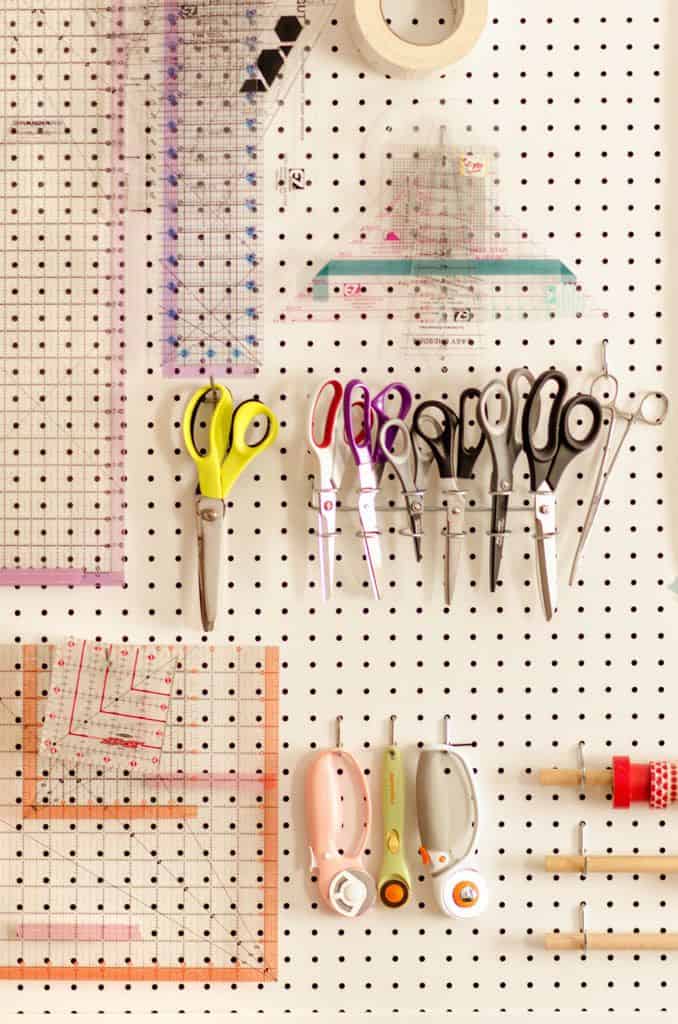Pegboard Spotlight: A World of Playful Learning and Creativity for Kids
Hey there, super-cool parents! If you’re on the hunt for a home run in the world of children’s activities, you’ve landed in the perfect spot. Today I’m shining a spotlight on pegboards, a fantastic, versatile tool that blesses kids with hours of fun while stealthily boosting their developmental skills. ?
Welcome to the colorful and imaginative universe of pegboards! Whether you’re new to this concept or looking for fresh ideas to level up your pegboard game, this guide is your one-stop shop. Let’s dive in and explore the myriad ways pegboards can support your child in hitting those developmental milestones with a smile!
What Exactly Is a Pegboard?
Before we start our enchanting journey, let’s take a moment to demystify the pegboard. A pegboard is a sturdy, grid-like board that has evenly spaced holes in which kids can place pegs, shapes, or other materials. They come in various sizes, materials, and shapes, making them super adaptable to different age groups and interests. These hands-on boards are bubbling cauldrons of cognitive development, fine motor skill enhancement, and, most importantly, joy!
Benefits of Pegboards for Kids
- Boosts Fine Motor Skills: Pegboards are ace at developing those tiny hand muscles as kids grip and place pegs.
- Enhances Problem-Solving: Deciding where each peg should go sharpens those critical thinking skills!
- Encourages Creativity: A blank pegboard is a canvas for imagination – watch your child’s creativity take flight.
- Teaches Colors and Coordination: Sorting pegs by color and shape is a masterclass in visual coordination and recognition.
- Improves Concentration: Focusing on a pegboard project helps hone attention spans in a world full of distractions.
Choosing the Right Pegboard for Your Little One
Not all pegboards are created equal, and picking the one that best suits your child’s age and development stage is key.
Pegboard Types:
- Basic Pegboards: Simple boards with holes and colorful pegs perfect for toddlers just starting to explore.
- Patterned Pegboards: These come with cards or templates that challenge children to recreate specific designs, ideal for preschoolers.
- Lacing Pegboards: Boards that allow children to thread strings or laces through, offering an additional layer of fine motor practice.
- 3D Pegboards: For the more advanced child, these pegboards help in building three-dimensional structures, fostering spatial awareness.
- Pegboard Games: Turn learning into play with pegboard games that involve rules and objectives for school-aged kids.
Setting Up the Perfect Pegboard Play Area
Crafting a designated pegboard play area in your home can create an environment that encourages regular interaction with this tool. Ensuring the space is free from distractions and easily accessible will invite your child to play more often.
Here’s a quick checklist for setting up the space:
- Safety First: Make sure the area is childproof with no sharp edges or small, loose parts for the younger tots.
- Good Lighting: A well-lit space will make it easier for your child to differentiate between colors and work with precision.
- Comfortable Seating: A comfortable stool or chair that is the right height encourages longer periods of engagement.
- Storage Solutions: Keep all pegboard accessories organized in bins or drawers to promote tidy habits.
- Inspiring Atmosphere: Decorate the area with bright colors and your child’s previous pegboard creations to inspire new projects.
As we embark on this enchanting pegboard journey together, let’s remember that the goal is to foster a love for learning and creativity. Stay tuned as we delve deeper into the different types of pegboard activities, educational games, and DIY pegboard ideas that will ensure your kids are having so much fun, they won’t even realize they’re learning!
Ready to watch your kiddo become a pegboard Picasso? Well, strap in because we’re about to turn that blank board into a masterpiece of development and discovery! ?

5 Things Parents Should Know Before Starting Pegboard Spotlight
- Age-Appropriate Selection: Consider the age and skill level of your child when choosing a pegboard. While younger kids might benefit from larger pegs and holes for easier manipulation, older children might find more joy and challenge in complex patterns and smaller pegs that require more dexterity.
- Space Allocation: Determine a dedicated space within your home for pegboard activities. It doesn’t need to be a large space but should be a consistent spot that your child associates with this type of play. Familiarity breeds comfort, which can often lead to increased engagement and enjoyment.
- Supervision is Key: Especially for younger children, it’s important to supervise pegboard play. Not only to ensure safety but also to guide them through challenges, celebrate their successes, and maybe even learn something new alongside them.
- Variety of Accessories: Accumulate a variety of pegs, shapes, and boards as your child’s interests and skills grow. This will keep them engaged and prevent the activity from becoming monotonous. It’s also a great way for them to explore new textures, patterns, and design possibilities.
- Scheduled Play: Integrating pegboard time into your child’s routine can provide stability and structure. Whether it’s a quiet activity after naptime or a collaborative family game night feature, regular interaction with pegboards can foster a deeper understanding and lasting educational impact.
Get Creative: Engaging Pegboard Activities
Lively pegboard play isn’t just about placing pegs into holes; it’s an avenue for boundless creativity and educational opportunities. Here are some fantastic activities that breathe life into the pegboard experience:
Themed Pegboards
Create themes based on your child’s interests. Whether it’s a cosmic space adventure with stars and planets or a garden teeming with flowers and insects, these themed pegboarding sessions ignite imaginative storytelling.
Interactive Challenges
Design challenges that encourage your child to think out of the box. Ask “Can you build the tallest tower?” or “What animals can you create?” These prompts push your child to explore boundaries and think creatively.
Colorful Learning
Use the pegboard to reinforce color knowledge by asking your child to sort pegs by hue, create patterns, or even practice color mixing by overlaying translucent pegs.
Tactile Textures
Introduce different materials like felt, foam, or rubber pegs to provide sensory learning along with fine motor skill development. Feeling different textures can be a delightful sensory experience for children.
Family Game Nights
Incorporate pegboards into family game nights. Create simple competitive games or cooperative challenges that not only entertain but teach valuable lessons in teamwork and patience.
Engaging with pegboards is about creating magic from the mundane, transforming simple actions into gateways of learning and delight for your child. While the pegboard forms the foundation, you and your little one bring the art to life, sparking joy and creativity with each peg placed. Let the adventures in pegboard play commence!
See more great Things to Do with Kids in New Zealand here. For more information see here
Disclaimer
The articles available via our website provide general information only and we strongly urge readers to exercise caution and conduct their own thorough research and fact-checking. The information presented should not be taken as absolute truth, and, to the maximum extent permitted by law, we will not be held liable for any inaccuracies or errors in the content. It is essential for individuals to independently verify and validate the information before making any decisions or taking any actions based on the articles.




